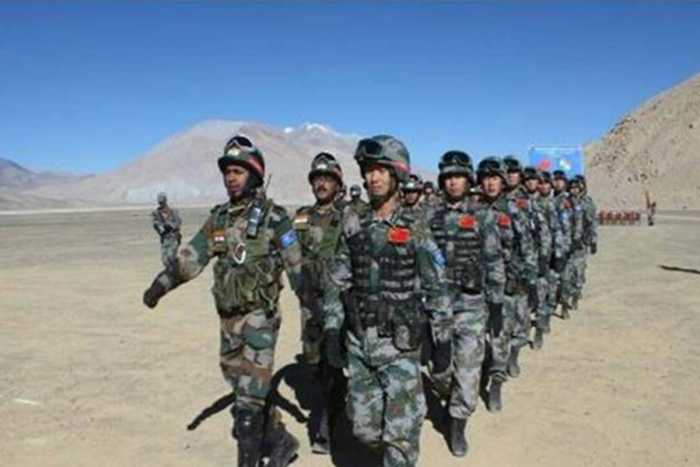
It is natural that this can be done only through mutually agreed reciprocal actions. A statement from India’s Ministry of External Affairs said that it is important to bear in mind that achieving this requires agreed actions by both sides and not attempting to alter the status quo unilaterally.
India’s Ministry of External Affairs, said this after Chinese Defence Ministry today said, since the Galwan Valley clash, China and India have held several rounds of talks through military and diplomatic channels, and progress has been made in disengaging the frontline troops of both sides.
It added that the two sides will continue to sincerely work towards complete disengagement of the troops along the Line of Actual Control (LAC) in the Western Sector in accordance with the agreements reached between the two foreign ministers and the two Special Representatives during their conversation on 5th July.
In this context, in the last meeting of the WMCC, the two sides have agreed to resolve the outstanding issues in an expeditious manner and in accordance with the existing agreements and protocols, it said.
Both sides also agree that full restoration of peace and tranquility in the border areas would be essential for the overall development of bilateral relations.
The two sides had also agreed to continue their engagements both through diplomatic and military channels.
Referring to various past border incidents, India’s External Affairs Minister Dr. S. Jaishankar in a recent interview, had noted that what was common was that all borders situations were resolved through diplomacy.
EAM had further noted that “when it comes to finding a solution, this must be predicated on honouring all agreements and understandings. And not attempting to alter the status quo unilaterally”
India’s assertion of mutually agreed reciprocal actions by both the sides comes in the backdrop of China’s expectation from India to look at the big picture of bilateral ties and putting the border issue in an appropriate position in this big picture and avoid misjudgment.
India and China were unable to overcome their differences on the disengagement and de-escalation process along the LAC during the last diplomatic talks (WMCC talks) held on 20th August, with New Delhi emphasising the need to resolve “outstanding issues” in an expeditious manner and in accordance with the existing agreements and protocols.
Even as, both the sides agreed that restoration of peace and tranquillity in the border areas would be essential for the overall development of bilateral relations; disengagement at certain points at LAC in western sector of the boundary remains the sticking point where China is reluctant to move from as per official sources.
As per agreement between both the countries, areas where the boundary is not clear, will be used for patrolling by both the countries without making any structure or any deployment of troops but China has violated this agreement by changing the status quo of April after which it started amassing the troops near LAC.
Indian Embassy in Beijing told Prasar Bharati that India is continuing its outreach activities with all shades of Chinese opinion on the state of relations between the two countries.
Recently, India’s Ambassador to China Vikram Misri held a virtual meeting with Chinese scholars organised by the Indian Embassy in association with Beijing-based Tsinghua University. In his keynote address, he has called for promoting mutual understanding between the two countries on the basis of basic principles. Several Chinese scholars specialising in China-India relations participated in the 2nd China-India Roundtable, the Indian mission said in a tweet.
Misri’s interaction with the Chinese scholars came against the backdrop of reports that the disengagement process between the troops of China and India has not moved forward as expected along the Line of Actual Control (LAC) in eastern Ladakh after soldiers of the two countries were engaged in a violent clash in the Galwan Valley on June 15.
In recent weeks, Misri met senior officials of the ruling Communist Party of China (CPC) and senior General of Chinese military and briefed them on India’s stance on the situation at the borders in eastern Ladakh in the western sector of the border.
On August 14, Misri met Maj. Gen. Ci Guowei, Director of the Office of International Military Cooperation of China’s Central Military Commission, (CMC) and briefed him about India’s stance vis-a-vis the situation on the borders in eastern Ladakh.
The CMC, which is the overall high command of the Chinese military is headed by Chinese President Xi Jinping.
On August 12, Misri met Liu Jianchao, Deputy Director of the Office of the Communist Party of China Central Committee Foreign Affairs Commission and apprised him about India’s stance on the border tensions.
The Chinese People’s Liberation Army has pulled back from the Galwan Valley and certain other friction points but the withdrawal of its troops has not moved forward from the Finger areas in Pangong Tso, Gogra and Depsang as demanded by India, according to sources. India has been insisting that China must return to the status quo ante to mid-April.
The formal process of disengagement of troops began on July 6, a day after a nearly two-hour telephonic conversation between National Security Advisor Ajit Doval and Chinese Foreign Minister Wang Yi on ways to bring down tensions in the region.
ANSHUMAN MISHRA/PBSC,BEIJING and ABHISHEK JHA
